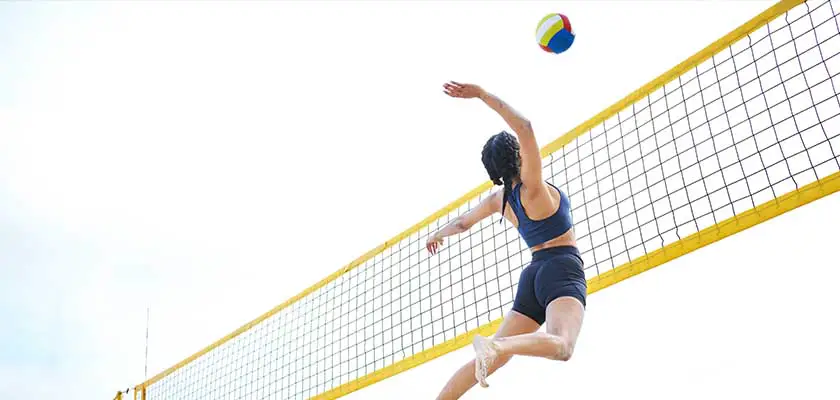Beach volleyball is a sport that originated in the United States at the beginning of the 20th century and has become popular all over the world in recent decades.
It’s a sport derived from traditional volleyball, but with some differences in the fundamentals, number of players and type of court.
In this guide, we’ll explain the main rules of beach volleyball, from team formation to scoring, fouls and equipment allowed.
We’ll also cover the characteristics of official matches, such as duration, serving, receiving, lifting, attacking and defending.
Check it out 👇
What is beach volleyball?
Beach volleyball is a sport that consists of a contest between two teams of two players each, on a sand court divided by a net.
The aim of the game is to make the ball touch the ground on the opponent’s side using coordinated hand and arm movements.
It has been an Olympic sport since 1996 and its main characteristics are the athletes’ agility, endurance and strength.
How many people are in a beach volleyball team?
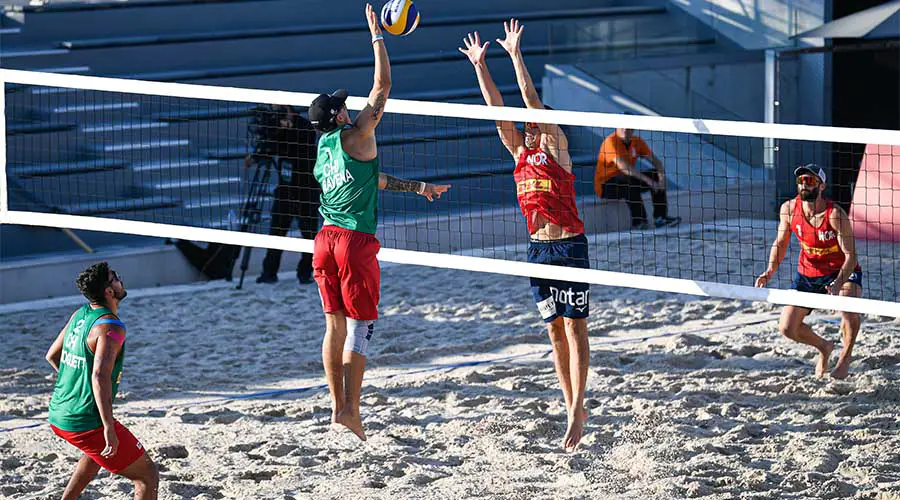
A beach volleyball team is made up of two players. Unlike court volleyball, when a player gets injured, there is no substitution.
The match referee gives the member of the pair five minutes to recover from the injury. If they are unable to continue, the match is finished and victory is awarded to the opposing team.
There is a variation of beach volleyball made up of teams of four, but the sport is not as popular.
Dimensions of the beach volleyball court
The official beach volleyball court is 16m long and 8m wide. Right in the middle, there is a net dividing the two sides.
The surface of the court is made up of sand – hence the name beach volleyball. Anything beyond the 16×8 mark is considered “outside”.
Beach volleyball net height
- Men – 2,43m
- Women – 2,24m
Beach volleyball ball
The official beach volleyball ball needs to have a circumference of between 66 and 68cm, a weight of between 260 and 280g and an internal pressure of between 0.175 and 0.225 kg/cm².
In addition, it must be made of a flexible material that doesn’t absorb moisture, as some matches are played in the rain.
As for color, beach volleyball rules stipulate that balls must be made in a single uniform color or a combination of contrasting colors.
Beach volleyball equipment
According to the rules of beach volleyball, players can play wearing shorts, swimwear, tank tops, tank tops or T-shirts, numbered 1 to 2
They are also allowed to play with sun protection equipment, such as visors, caps and sunglasses.
Athletes must enter the court barefoot, unless the athlete has some kind of limitation that requires extra equipment, such as socks. In this case, the situation must be communicated to the organization in advance.
Beach volleyball scoring system
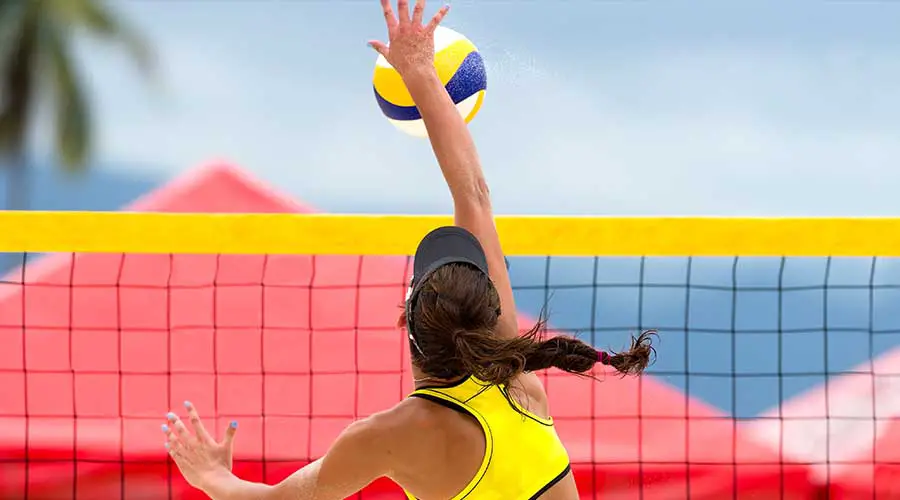
To win a beach volleyball match, the pair must win two sets of 21 points. However, they must finish them with a difference of two points compared to the opposing team. Are you confused? Let’s illustrate below.
Suppose the score of the set is 20-20. In this scenario, the match won’t end 21-20, because you have to take a two-point lead.
In this way, the game will continue endlessly until one team scores 22-20, 23-21, 24-22 or any other score with a two-point difference.
At the 2021 Tokyo Olympics, for example, France beat Brazil 39-37 in a match that lasted 51 minutes.
In the event of a 1-1 draw in the number of sets, the tiebreak is played. This third and final set consists of just 15 points. The two-point rule also applies.
To score points, the players perform a series of coordinated movements, such as receptions, serves, cuts and blocks. We’ll look at each of these separately later.
What are the official rules of beach volleyball?
- Whoever wins two sets first wins the match;
- The first two sets last 21 points;
- The third set (tiebreak) is shorter and lasts 15 points;
- In order to win any set, you have to score two points off the final score. Otherwise, the match will continue until this happens;
- Doubles switch sides every seven points in normal sets;
- Doubles switch sides every five points in the tiebreak;
- Each pair can request a time-out of 30 seconds in each set;
- There are no substitutions in beach volleyball. If a player is injured, the referee gives them five minutes to recover. If they can’t, the match is finished and victory is awarded to the opponent;
- There are no fixed positions. Players can start the point anywhere on the court, without a foul being called;
- There is no rotation like in indoor volleyball;
- Each pair can take up to three touches to pass the ball;
- In beach volleyball, a block counts as a touch. If this happens and the ball remains in play, the pair can only take two more touches of the ball before passing it to their opponents;
- When the ball is lifted for a finish, it must not rotate around its axis. If this happens, a two-touch foul is called and the point goes to the opponent;
- The drop shot in beach volleyball can only be made with the fingers joined and closed (crock) or with the palm of the hand. If the athlete uses their fingers with an open hand, a foul is called;
- When two players fight for the ball at the same time on the edge of the net, no foul is called as in indoor volleyball;
- When serving, the player’s partner cannot stand and block the opponent’s view. That’s why they crouch down.
Beach volleyball fundamentals
- Serve
- Reception
- Setting
- Attacking
- Blocking
Serve
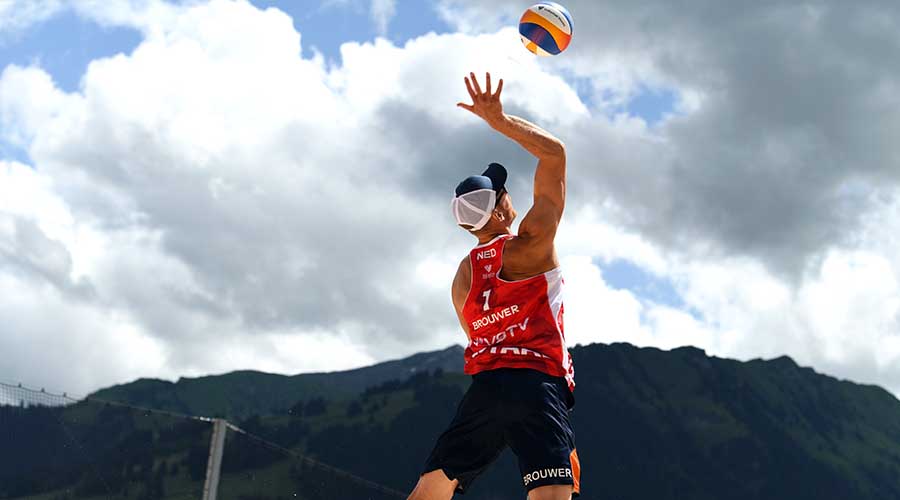
The serve is the action that starts the point. It must be performed behind the baseline. If the player invades the court, a foul is called.
In the serve, the player hits the ball with the aim of passing it to the other side. If they don’t, it’s a point for their opponent.
When we score a service point, that is, when the opponent fails to receive the ball, we say it was an ace.
Reception
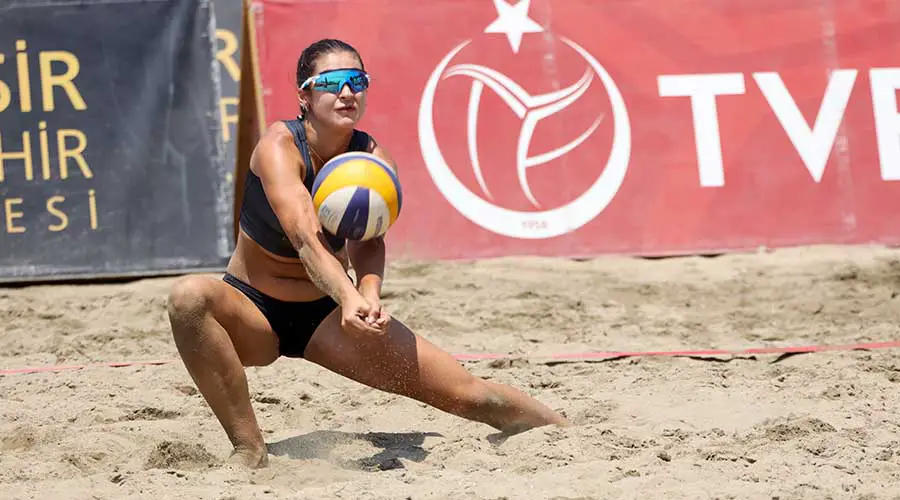
Reception is another fundamental of beach volleyball.It consists of receiving a ball from the opponent’s side of the court.
To do this, the players can use either the headlock (forearms stretched forward with both hands joined by the thumbs) or the touch (arms stretched above the head with the fingers flexed)
In a traditional play construction, the reception is the first touch of the three who will pass the ball to the other side.
Setting
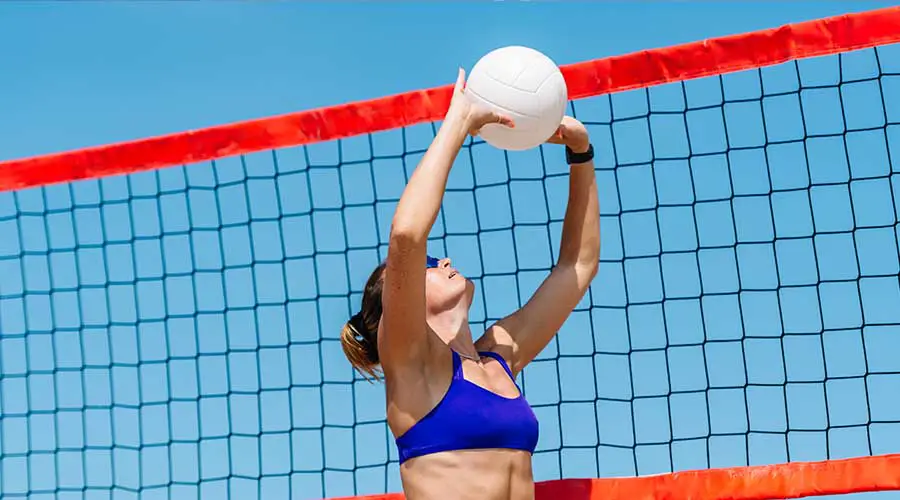
The setting is the movement that “prepares” the ball for a teammate to attack.In beach volleyball, this action can be done with a touch or a spike.
A perfect lift needs to have good height. In addition, it mustn’t land flat on the net, as this is a full plate for the opponent to attack it.
In traditional volleyball, a specific player is in charge of serves. In beach volleyball, the team is made up of just two players, both of whom need to be good lifters.
Attacking
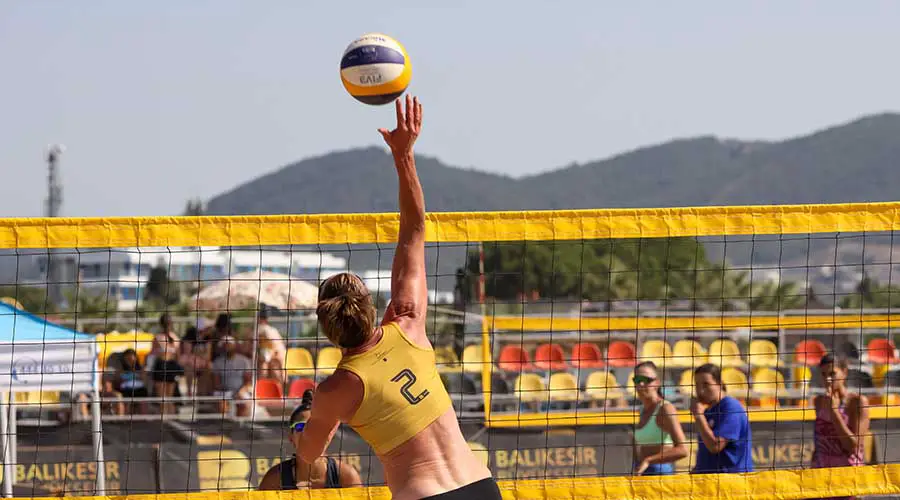
The attack is the third and final touch that concludes a beach volleyball move, in other words, the end of a lift.
You can attack the ball in two ways: by hitting it hard with the palm of your hand (spike) or by giving it a light touch so that it falls slowly (drop shot).
Blocking
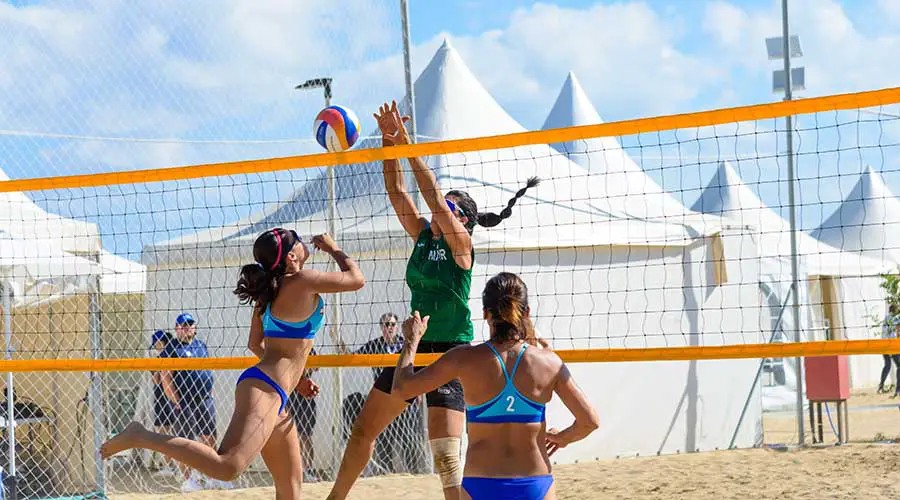
When an opposing team is attacking, the other team can try to block the ball. This movement consists of jumping and putting their arms above the net.
To do this, the athlete needs to have good timing to jump at the right moment. It’s even possible to score through blocking.
Now you know the rules of beach volleyball and are ready to watch the matches!Did you like this content? Leave your feedback in the comments!
For more complete and fresh content on sports, visit our website every day! We publish articles every morning.


